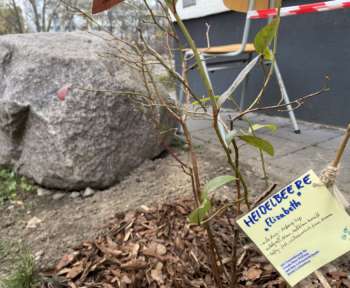Many people connect the term “Brutalism“ with ugly, depressing and oppressive buildings. Sometimes that is the case, considering some buildings’ histories, like the bunker in Reinhardtstr.
As late as 1943, the Nazis had the monstrous high bunker built in the middle of the city. According to the plans of architect Karl Bonatz, thousands of forced laborers worked on the square building, which was intended to provide protection for rail travelers in an emergency. After the war, the Soviets used the bunker as a remand prison, later it served as a textile warehouse and storage area for tropical fruits, which is why the East Berliners liked to call it a “banana bunker“.
The Birth of Brutalism
But the origin of the term is less shocking. It comes from the French béton brut and it included the work of architects whose buildings, mostly public institutions, confronted their viewers with slabs of raw, unfinished concrete.
It became popular in the mid-50’s, when the world was still rising out of the ruins of WWII, and was famous for its use of concrete, geometric shapes, a monochrome color scheme, steel and glass. The style adhered to three crucial criteria: the clear exhibition of structure, the valuation of materials and the memorability of the structure built. The reason that it became popular was because it was a modern, efficient and cheap solution for mass public housing, as well as evoked an era of optimism and belief in the permanence of public institutions.
The Truth Behind Brutalism
Brutalsim is more than just a cheaper way to produce houses for thousands. It is also a philosophy, a movement to triumph ethic over aesthetic. Brutalism strives to be simple, honest and functional. It is the architectural way of ‘telling it like it is’ and does nothing more than accommodating their inhabitants, purpose and location. Brutalism favors functionality over aesthetic. Peter Smithson, an English architect and one of the core founders of New Brutalism, believed that brutalism was about the quality of the material and not about what material was used.
Sadly, Brutalism went out of fashion in the mid-70’s due to films that turned them into symbols of future dystopia, as well as the rise of high-tech architecture, or Structural Expressionism and Deconstructivism, which became famous styles in the 80’s.
Nowadays, one can find a comeback in the popularity of brutalist architecture, and even though many have already been demolished, others are getting funds from the state to restore the buildings. Still, there are many critics of its style, saying that it projectes an atmosphere of coldness and even totalitarianism. This rise in popularity goes hand in hand with gentrification, since social housing projects have become sought after private housing. One could say the aesthetic is triumphing over the ethic, something Brutalist architecture and ideology was trying to combat. Even so, more people are beginning to appreciate its’ style and hopefully this will be enough to keep it and its ideology live.










